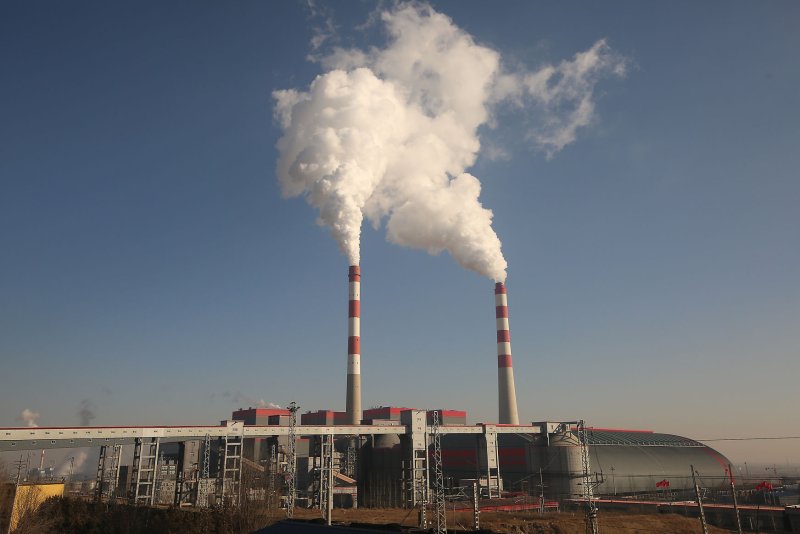Scientists have developed a way to turn CO2 back into coal. Photo by Stephen Shaver/UPI |
License Photo
Feb. 27 (UPI) -- Scientists in Australia have developed a way to turn carbon dioxide back into coal, a first. The breakthrough could pave the way for new carbon capture and storage technologies.
Most carbon capture methods involve compressing CO2 into liquid form to be pumped and stored underground. Despite progress, the best carbon capture and storage technologies still aren't economical. They also pose environmental concerns.
The new carbon-to-coal method could be used to more sustainable store captured carbon.
"To date, CO2 has only been converted into a solid at extremely high temperatures, making it industrially unviable," Torben Daeneke, researcher at the Royal Melbourne Institute of Technology, said in a news release. "By using liquid metals as a catalyst, we've shown it's possible to turn the gas back into carbon at room temperature, in a process that's efficient and scalable."
To turn CO2 into coal, scientists developed a liquid metal catalyst that is highly conductive. The conversion process begins by dissolving the captured carbon dioxide in an electrolyte liquid. After a small amount of the catalyst is added, a current is run through the solution.
Chemical reactions caused solid flakes of carbon to separate from the solution. The process is efficient and scalable, but researchers acknowledge more work is needed before the method can be commercialized.
"While more research needs to be done, it's a crucial first step to delivering solid storage of carbon," Daeneke said.
Because the carbonaceous solids are stable, they could be compacted and buried in the ground. They could also be used as electrodes in batteries or engines.
"A side benefit of the process is that the carbon can hold electrical charge, becoming a supercapacitor, so it could potentially be used as a component in future vehicles," said Dorna Esrafilzadeh, research fellow at RMIT's School of Engineering. "The process also produces synthetic fuel as a by-product, which could also have industrial applications."
Researchers described their first of its kind CO2 conversion technology this week in the journal Nature Communications.
"While we can't literally turn back time, turning carbon dioxide back into coal and burying it back in the ground is a bit like rewinding the emissions clock," Daeneke said.
Though many climate scientists and policy makers have welcomed the assistance of carbon capturing technologies to slow global warming, most governments and policy groups, including the United Nations, insist that dramatically curbing the burning of fossil fuels is the only way to minimize the damage of climate change.















